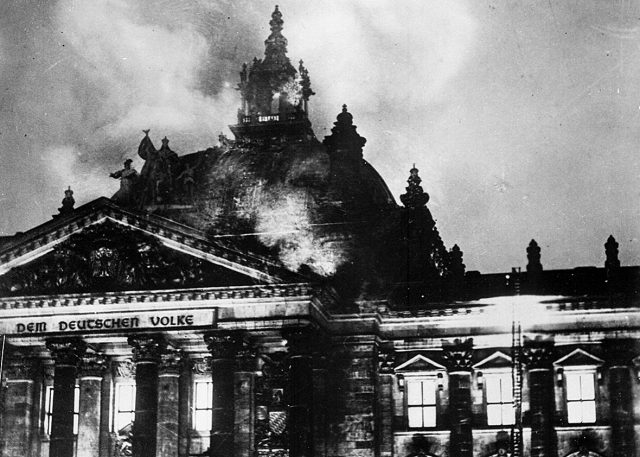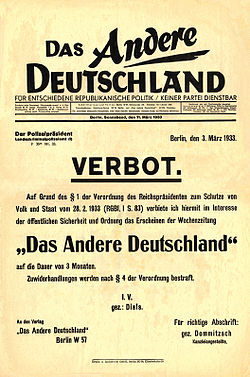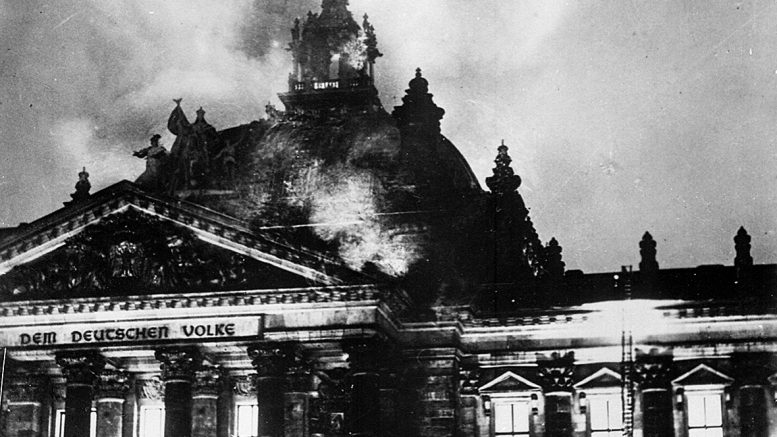
By Sarah K. Burris
The Raw Story (5/1/17)
Yale University Professor Timothy Snyder‘s recent book focusing “On Tyranny” not only puts President Donald Trump in context with other 1930s fascists but it walks readers through steps for the resistance to maintain freedom.
In a recent interview for Chauncey DeVega’s podcast, Snyder explained that Americans assumed nothing bad would ever happen once the Cold War ended. Trump managed to tap into the idea that the U.S. isn’t a democracy anymore so people should simply let him be their very own oligarch. But because Americans tend to throw around terms like “fascist,” “dictator” and “Hitler,” the idea loses its meaning. Add to that, Americans tend to believe in our own exceptionalism.
“As I see it, there are certainly elements of his approach which are fascistic,” Snyder explained. “The straight-on confrontation with the truth is at the center of the fascist worldview. The attempt to undo the Enlightenment as a way to undo institutions, that is fascism.”
Snyder writes in his book that Trump will likely have his own conflict that brings about the “massive reckoning” Bannon seeks. …In fact, Snyder said that it was “inevitable” that Trump and his team would try such an obvious stunt.
Fascists during the 20th century were quick to urge putting aside the facts. They also tend to use language similar to Trump’s during his rallies. They name enemies, remove opponents and use blunt slogans and soundbites over and over again.
“And Mr. [Steve] Bannon’s preoccupation with the 1930s and his kind of wishful reclamation of Italian and other fascists speaks for itself,” Snyder notes.
At the same time, somehow the Democrats became the status quo party while Republicans became the party seeking to undo the system. Bannon’s fascination with the Fourth Turning plays into it as Bannon seems to want to instigate the next great turning so that he can craft the future the way he wants. Bannon believes the only way we can usher in a new world order with a “massive reckoning” that results in conflict, thus he eggs on such conflicts.
Trump is allowed to soldier on with one failure after another as evidence of his incompetence staggers around the White House in a bathrobe. As a television personality, he’s judged only by those standards, not by the standards we hold real political leaders and public servants. …
*****
The Reichstag Fire and the Enabling Act of March 23, 1933

Encyclopedia Brittanica Blog (3/27/07)
On his first day (Jan. 30, 1933) as chancellor of Germany, Adolf Hitler convinced German President Paul von Hindenburg that the Reichstag (parliament) must be dissolved. New elections were scheduled for March 5; meanwhile, Hitler continued meetings with industrialists and military leaders to discuss plans to rebuild Germany’s military might. Krupp AG and IG Farben, in particular, donated millions of marks to the Nazi Party for the new elections.
On the night of Feb. 27, 1933 the Reichstag building was set on fire. At the urging of Hitler, Hindenburg responded the next day by issuing an emergency decree “for the Protection of the people and the State,” which stated: “Restrictions on personal liberty, on the right of free expression of opinion, including freedom of the press; on the rights of assembly and association; and violations of the privacy of postal, telegraphic and telephonic communications and warrants for house searches, orders for confiscations as well as restrictions on property, are also permissible beyond the legal limits otherwise prescribed.”
The Nazi’s immediately used the decree to intensify their attacks on their political opponents, especially the communists. Although the Nazi Party failed to win a majority in the March 5 elections, Hitler was able to push through the Enabling Act (officially, “Law for Removing the Distress of the People and the Reich”) on March 23. With 441 votes for and 84 against (the Social Democrats) the act officially recognized Hitler as Germany’s dictator and abolished democracy.
After 74 years, the question of who actually started the Reichstag fire is still debated. Nevertheless, most historians believe that Nazis were involved either directly or through instigation—what would now be called a false flag operation—in order to blame the communists and garner public support for their programs. And it didn’t take them long to start finding scapegoats. Along with rounding up communists, leftist intellectuals, and labor leaders, on April 1 the Nazis began the boycott of Jewish businesses and the official persecution of Jews. …

